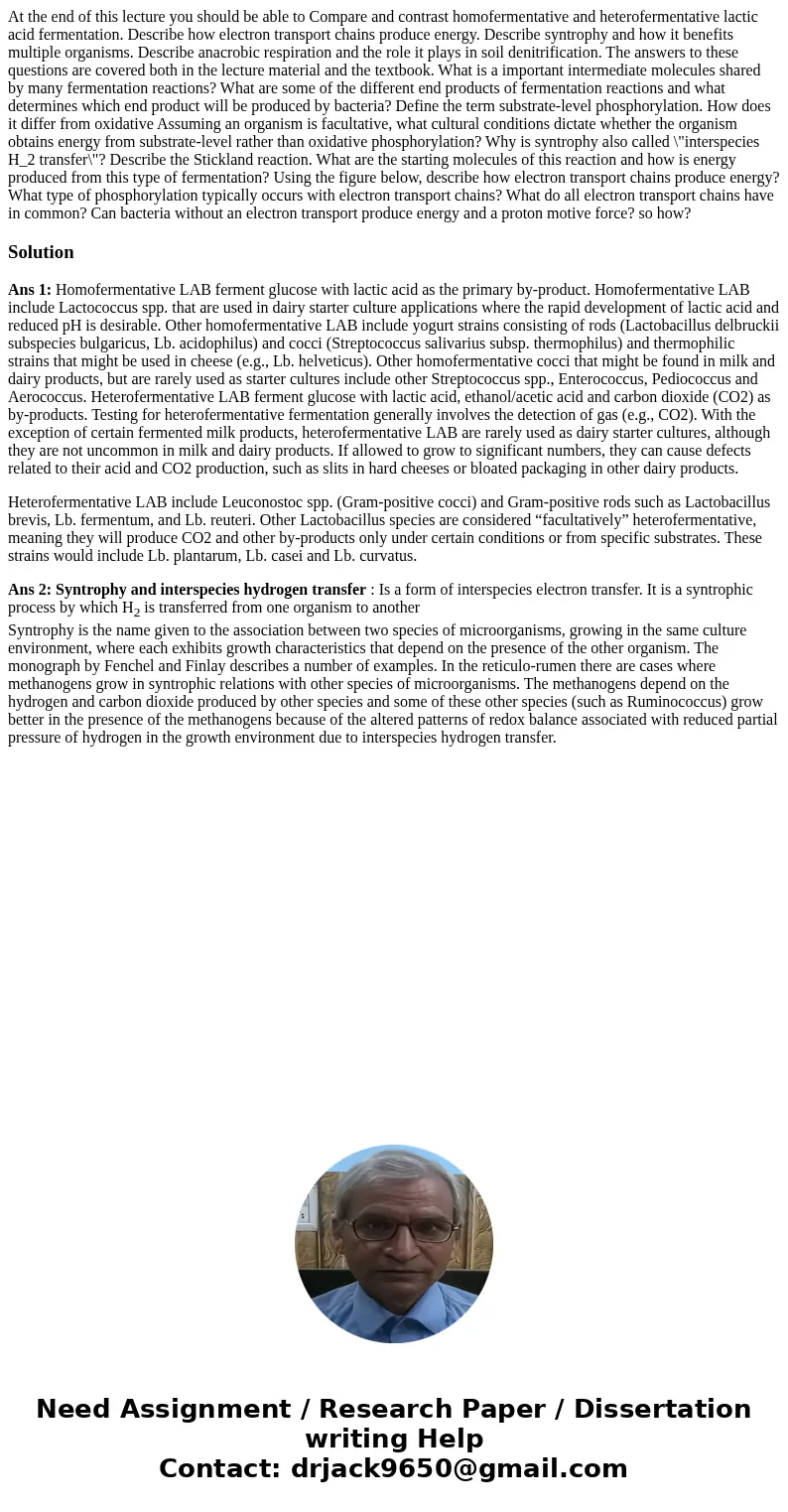At the end of this lecture you should be able to Compare and
Solution
Ans 1: Homofermentative LAB ferment glucose with lactic acid as the primary by-product. Homofermentative LAB include Lactococcus spp. that are used in dairy starter culture applications where the rapid development of lactic acid and reduced pH is desirable. Other homofermentative LAB include yogurt strains consisting of rods (Lactobacillus delbruckii subspecies bulgaricus, Lb. acidophilus) and cocci (Streptococcus salivarius subsp. thermophilus) and thermophilic strains that might be used in cheese (e.g., Lb. helveticus). Other homofermentative cocci that might be found in milk and dairy products, but are rarely used as starter cultures include other Streptococcus spp., Enterococcus, Pediococcus and Aerococcus. Heterofermentative LAB ferment glucose with lactic acid, ethanol/acetic acid and carbon dioxide (CO2) as by-products. Testing for heterofermentative fermentation generally involves the detection of gas (e.g., CO2). With the exception of certain fermented milk products, heterofermentative LAB are rarely used as dairy starter cultures, although they are not uncommon in milk and dairy products. If allowed to grow to significant numbers, they can cause defects related to their acid and CO2 production, such as slits in hard cheeses or bloated packaging in other dairy products.
Heterofermentative LAB include Leuconostoc spp. (Gram-positive cocci) and Gram-positive rods such as Lactobacillus brevis, Lb. fermentum, and Lb. reuteri. Other Lactobacillus species are considered “facultatively” heterofermentative, meaning they will produce CO2 and other by-products only under certain conditions or from specific substrates. These strains would include Lb. plantarum, Lb. casei and Lb. curvatus.
Ans 2: Syntrophy and interspecies hydrogen transfer : Is a form of interspecies electron transfer. It is a syntrophic process by which H2 is transferred from one organism to another
Syntrophy is the name given to the association between two species of microorganisms, growing in the same culture environment, where each exhibits growth characteristics that depend on the presence of the other organism. The monograph by Fenchel and Finlay describes a number of examples. In the reticulo-rumen there are cases where methanogens grow in syntrophic relations with other species of microorganisms. The methanogens depend on the hydrogen and carbon dioxide produced by other species and some of these other species (such as Ruminococcus) grow better in the presence of the methanogens because of the altered patterns of redox balance associated with reduced partial pressure of hydrogen in the growth environment due to interspecies hydrogen transfer.

 Homework Sourse
Homework Sourse